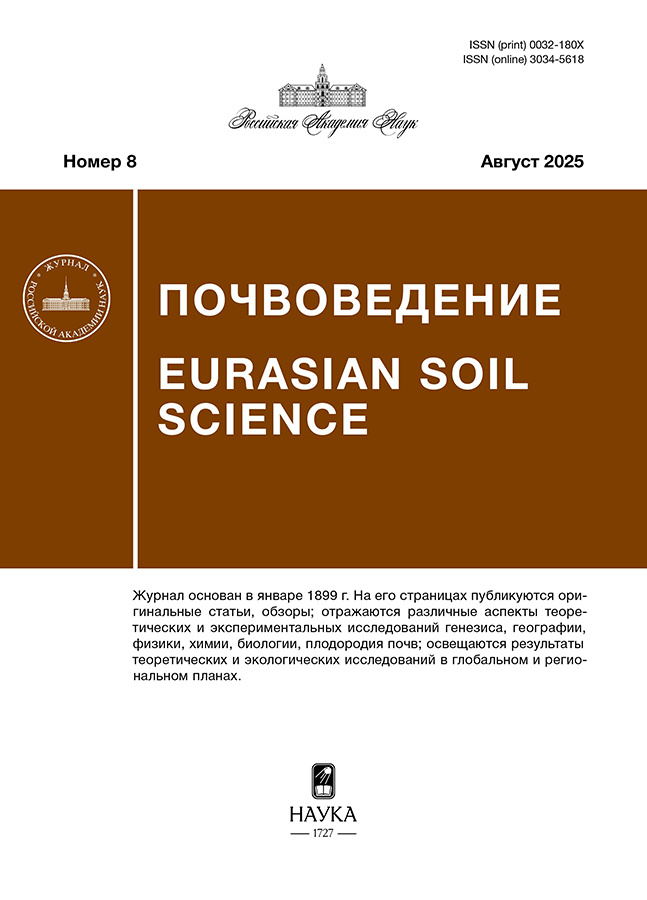Permafrost-affected gleyzems of the Subpolar Urals: morphological and cryogenic structure, temperature regime and physical-chemical properties
- Authors: Zhangurov E.V.1, Kaverin D.A.1, Dymov A.A.1, Startsev V.V.1
-
Affiliations:
- Institute of Biology of the Komi Scientific Center of the Ural Branch of the Russian Academy of Sciences
- Issue: No 8 (2025)
- Pages: 1008–1024
- Section: GENESIS AND GEOGRAPHY OF SOILS
- URL: https://stomuniver.ru/0032-180X/article/view/688107
- DOI: https://doi.org/10.31857/S0032180X25080039
- EDN: https://elibrary.ru/INNDUL
- ID: 688107
Cite item
Abstract
The article studies the structure and properties of permafrost-affected gleyzems and peat-gleyzems in the tundra landscapes of the Subpolar Urals, the southernmost mineral soils with insular permafrost that is particularly sensitive to present-day climate change. The study examines in detail the morphological and cryogenic structure, temperature regime, mineralogical composition, and physical-chemical properties of active layer and underlying permafrost. The thin active layer is characterized by the predominance of peat horizons and significant gleyization of mineral horizons; a high-ice transition layer is localized in the upper permafrost. Massive cryogenic textures were revealed in the active layer, and schlieren and ataxic textures were found in the underlying permafrost. Peat-gleyzem, in contrast to the colder gleyzem, is characterized by a relatively mild temperature regime, which is explained by the increased thickness of the heat-insulating peat horizon and a greater depth of snow cover. Permafrost-affected soils of the Subpolar Urals are confined to climate-driven ecosystem-modified permafrost. It was revealed that the predominance of the coarse silt fraction in soils with close underlying permafrost contributes to the significant thixotropy of gleyed active layer. Cryogenic-lithological heterogeneity of profiles in the conditions of the subarctic humid climate of the mountainous country determines the specific structure and properties of gley permafrost-affected soils of the Subpolar Urals.
Full Text
About the authors
E. V. Zhangurov
Institute of Biology of the Komi Scientific Center of the Ural Branch of the Russian Academy of Sciences
Author for correspondence.
Email: zhan.e@mail.ru
ORCID iD: 0000-0002-4297-7536
Russian Federation, Syktyvkar
D. A. Kaverin
Institute of Biology of the Komi Scientific Center of the Ural Branch of the Russian Academy of Sciences
Email: zhan.e@mail.ru
ORCID iD: 0000-0003-2559-2340
Russian Federation, Syktyvkar
A. A. Dymov
Institute of Biology of the Komi Scientific Center of the Ural Branch of the Russian Academy of Sciences
Email: zhan.e@mail.ru
ORCID iD: 0000-0002-1284-082X
Russian Federation, Syktyvkar
V. V. Startsev
Institute of Biology of the Komi Scientific Center of the Ural Branch of the Russian Academy of Sciences
Email: zhan.e@mail.ru
ORCID iD: 0000-0002-6425-6502
Russian Federation, Syktyvkar
References
Supplementary files















